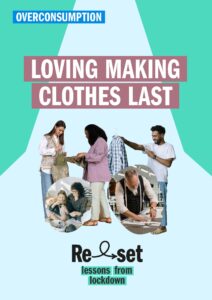Fashion is one of the largest industries in the world and – according to a 2020 report – to reach the relative safety of the internationally agreed 1.5-degree climate pathway, it would need to reduce annual emissions by 2030 to around roughly half of the current figure.
Many more people are thinking about sustainability in regard to fashion by purchasing fewer items, wearing more of their existing wardrobe, mixing in pre-loved items, and thinking about the number of wears per item when purchasing new pieces.
– Tracy Ross, Blissfully Organised
It estimated that much of this could come from energy-efficiency improvements and
a transition to renewable energy, but some 21% could come directly through the kind of changes in consumer behaviour we have seen during the pandemic.
The pandemic revealed to us just how fast the churn of our wardrobes and other household items had become, making a treadmill of consumption and reducing the real well-being attached to these very transient pleasure highs. The actions of many individuals here has already had an effect on the mainstream market, with second hand clothing moving from poor to cool. As sustainability criteria become more embedded in our wider economy, this new approach to clothes seems here to stay.

This story is part of the Reset series – a collection of short downloadable stories that look in more detail at over consumption and unnecessary travel. They consider some of the key messages and solutions that have become apparent during the pandemic that could help us make the rapid transition to a more sustainable future.
This guide has been made possible by the support of ClimateWorks Foundation.

